James Bond’s (Roger Moore) tracking device from the opening sequence of the movie A View to a Kill...
BROWSE BY: FILM | ACTOR | PRODUCT | NO TIME TO DIE | GIFT GUIDE
When you purchase through links on this site, we may earn an affiliate commission. Read more.
Advertisement
Skiing - Part 1
This is the first part in a series of three articles about Skiing, written by Joseph Darlington, aka Head of Section / BeingJamesBond.
"There was the starting point of the Gloria Run, the metal notices beside it hatted with snow. Bond didn't pause. He went straight for it and over the edge.
"The first vertical drop had a spine-chilling bliss to it. Bond got down into his old Arlburg crouch, his hands forward of his boots, and just let himself go. His skies were an ugly six inches apart. The Kannonen he had watched had gone down with their boots locked together, as if on a single ski. But this was no time for style, even if he had capable of it! Above all he must stay upright!
"Bond's speed was now frightening. But the deep cushioning of cold, light powder gave him confidence to try a parallel swing. Minimum of shoulder turn needed at this speed-weight on to the left ski-and he came around and held it as the right-hand edges of ski bit against the slope, throwing up a shower of moon-lit snow crystals. Danger was momentary forgotten in the joy of speed, technique, and the mastery of the snow."
- Chapter 16, On Her Majesty's Secret Service, 1963
What is it about skiing that is so quintessential to the world of James Bond? As one unknown author so perfectly put it, skiing is part adrenaline, part sensuality.
Adrenaline: The pure excitement of hot skis on burning snow is unforgettable. You're not even thinking about how you're going to stop at the bottom. Maybe you will carve a few turns as you swing around the curves of the giant mountain slope. Perhaps you will shrink into a racing tuck with your skis flattened and your fists held out in front of you. You take a curve in the slope and see the mountain fall away from you. You accelerate to a speed that is just beyond your control and hang on for dear life as you bounce over the ridges of the lower slope. It isn't until you reach the bottom that you realize how hard your body has been working. Your muscles burn, your back is aching from the tightness of your tuck, and you're gasping for breath. You look back at the mountain that you just conquered, and admire the awesome power of nature.
Sensuality: Imagine cruising down one of the wide, well-groomed slopes, breathing in the mountain air, while enjoying the heat of the sun and the cool air on your face. You'll stop at a beautiful mountain cafe for a hot chocolate, or a hot-spiced wine with the unmistakable smell of lemon, clove, and cinnamon stick. And, don't forget the unbeatable experiences beyond the skiing too. Consider the strange experience of sitting in a deck chair getting a sun tan at minus 4 degrees Celsius. Or enjoying a pint of beer and listening to a live band on an outdoor restaurant terrace, surrounded by snow-capped peaks under the bluest sky you have ever seen, and looking out across a mountain range that fills the entire horizon and watching the clouds drift beneath you. The aprs ski brings out the best in people; a wonderful group spirit descends every evening over groups of ruddy faces and cheery spirits. You find yourself with a hunger that you never thought possible, and that hearty dinner never felt so satisfying.
As this unknown writer points out, you don't go skiing, just for the skiing. You go for that rush of adrenaline, the glorious scenery, the amazing mountain air, and of course, the après ski.
No matter who you are, you can learn to ski.
So what is this article on skiing going to do for you? Like every topic we explore at Being James Bond, we're going to give you some insights and try to prepare you for your first day out on the slopes. But, as with everything else, hands-on experience is the key. An entire article about skiing won't add up to five minutes on the slope with a qualified instructor. We can't guide you down the slope, but we'll help you get there.
We'll discuss what your basic expectations should be for your first day of skiing. We'll try to answer a few questions and tame those fears a little bit. Then we are going to talk about how you should prepare for your trip; what exercises are going to help you most of all to get ready for a day of skiing. Then we will talk about clothing; what you should wear for your first day on the slopes; having the right clothing can definitely make or break your first experience. We'll talk about gear; you'll want to know how to choose the right skis, the right poles, and what you need to look for in a pair of boots-having the right boots with the right fit is essential. In future articles, we'll talk about how to navigate a ski area; we'll talk about the ski lifts, how to look for the beginner slopes, and how to identify the intermediate and advanced slopes. Then, we're going to discuss actual skiing technique, and offer up a few concepts to keep in the back of your mind on your first day of navigating the slopes. And last, but definitely not least, we are going to make a stop over at Piz Gloria on Mount Schilthorn near Mürren, in the Bernese Oberland, Switzerland, a Bond location that is central to the world of skiing.
Expectations
What should your expectations be? What are those burning questions that people have when they consider skiing for the first time? The first question is usually, "Will I fall?" and more importantly, "Will I get hurt?" The answer to the first question is, of course: Yes, you will fall. Just as in life, if you are not falling, you are not challenging yourself. Falling is simply a part of learning.
But, more important, "Will I get hurt?" Generally speaking, when you fall, the thing most likely to get bruised is your ego. If you have ever watched Olympic skiing on TV, you've seen some spectacular crashes, and the skier typically just stands up, brushes himself off, and walks away. You will certainly bounce off the snow many times as a beginner, but you will not be cruising anywhere near the speed of a professional skier. If you use your head and listen to a qualified ski instructor, you should be able to avoid any type of serious injury.
The next question is usually, "Will I look silly?" Even the most advanced skier was once a beginner. You will see people falling all over the slopes, so you will not stand out. Don't be afraid of looking silly.
Next question, "When I fall down, will I have trouble getting up?" The answer is yes. But, there are ways to help you get up a little easier, and we'll talk about them in this series.
Will I be cold? I can honestly say that the answer to that is no. If you have the right clothing and the right gear, then you should be able to stay warm for several hours on the ski slope.
So then what is the down side? What are the hurdles you need to overcome as a beginning skier? Well for starters, you'll find that as a beginner, you can go at only two speeds: too fast and too slow. This essentially means that on your first day of skiing, you can expect to feel either bored or terrified. But, as you progress you are going to find that area right in the middle, which is both exciting and fun. As with all the other activities we discuss at Being James Bond, there's absolutely nothing to be afraid of. Bond shows no fear, and neither should we. So grab your gear and let's get going!
Getting in shape
So what's the first thing we need to do? Let's get our bodies ready for the first day on the slopes. In addition to being fun, skiing is an excellent form of exercise. However, you don't want to wait until you are on the slopes to get into shape. I've found that one secret to a great day on the slopes is being prepared physically. You will take to skiing much faster, and your time on the slope will be longer, if you are in pretty good physical shape. You don't need to be in phenomenal shape, as skiing shouldn't be that physically demanding, but on the other hand, if you have already slipped into your winter hibernation, then you'll definitely want to shake that off before you go out for a full day of physical exertion.
So how should you get in shape for skiing? You are going to want to focus on stretching, cardiovascular exercise, and strength training.
Flexibility
One of the best ways avoid injury is to improve your flexibility. When you focus on stretching, consider which muscle groups will be called upon when skiing. This means focusing on your back, upper-legs, hips, and shoulders. In addition, you want to keep your calves very flexible, but also very strong. Which brings us to strength training.
Cardiovascular and Endurance Training
Good cardio vascular training is going to help you ski longer and stronger. The best type of cardio vascular exercise you do is totally up to you. Exercises such as like running, swimming, and bike riding are all good exercises for improving cardiovascular health. You can even break out mom's old Jane Fonda workout tapes for some good, old-fashioned aerobic exercise. Cardiovascular, or aerobic, training is most beneficial when it's done three to five times a week, and for about 30-45 minutes each.
Strength Training
I can't emphasize enough the importance of strength training before going skiing. I personally found that it makes a big difference in performance. I've had some great days on the slopes, and some lousy days on the slopes, and strength training seemed to make the difference. So which muscles do you want to focus on? You want to focus on your outer and inner thighs, on your quads (which is the group of larger muscles on the front of your thighs), and on your hamstrings (which is the group of muscles on the back of your thighs). Also, you want to focus on your calves, and even your shins. We tend to forget that we have muscles on our shinbones, but a skier who has his weight too far back and uses his feet to pull himself forward, is going to rely on those shin muscles.
So since skiing is particularly hard on your leg muscles, what can you do to develop those muscles? The two exercises that are going to help you most are squats and lunges. If you have membership to a gym or access to weight-training machines you can also do leg extensions and leg curls. And, since you are going to have your arms extended most the day while holding up those ski poles, you might want to throw in a couple of arm raises with those lunges too to build up your shoulders a bit.
Skiing is a sport that favors power more than strength. What's the difference? Power is the exertion of force through a distance over a period of time. One author explains the difference this way. If you stand up from a chair slowly you don't put out much power. If you leap up from that chair, you put out a lot of power. Now based on that simple explanation, you can deduce that weight lifting workouts involving many fast repetitions of moderate weight will better prepare you for skiing, than workouts using slow repetitions with maximum weights.
Skiing has another interesting characteristic. It requires your muscles to work in eccentric motions, much more than other sports. Eccentric muscle effort occurs while a muscle is extended, becoming longer. When you stand up from a chair, your thighs are working concentrically; meaning the muscles are contracting, or getting shorter. When you lower yourself into a chair, your thighs are working eccentrically. So since skiing places high eccentric demands on your legs, exercise machines such as the stair machine or the exercise bike, won't be the most effective ways to help you get ready for skiing. One author suggested taking an elevator to the top floor of a large office building, and walking down. This will actually do more for your ski-legs than walking up the stairs. Another suggestion is, if you are going squats with moderate weight, push up normally, but when you lower your body, try alternating on one leg each time. A few weeks of these exercises should have you more than ready for your first day of skiing.
Clothing
So when your body is ready, the next thing to consider is your ski clothing. Having the right clothing is going to be essential for you to enjoy your day, and be sure that you won't be cold or wet. One of the advantages that modern skiers have today is the clothing. If you know anybody who ever skied in the '50s or '60s, they can tell you that in the old days, skiers were cold. If you need any further proof of how far skiing apparel has come, just check out On Her Majesty's Secret Service and look at what James Bond was wearing on the slopes in that movie. Be happy you don't have to wear that when you ski.
If this is your first time skiing, you may have two choices when it comes to proper ski clothing. One choice would be borrowing some ski clothing from a friend (if you have a friend in your size). But, if you are pretty confident that skiing is something you want to spend some time doing, then you can go ahead and hit the ski shops and buy yourself a respectable ski outfit.
When you are planning to hit the ski shops, a good time to do this is mid-week, and hopefully before the ski-season is really under way, so that you are not rushed, fighting crowds of people, and a knowledgeable salesperson can take the time to assist you in finding exactly what you need. A good salesperson won't steer you wrong when it comes to picking out clothing.
The two most important functions of a good ski outfit are to keep you warm, and to keep you dry. As we said earlier, with today's modern ski apparel, there is no reason for you to ever be cold or wet on the ski slope. I've spent entire days on the ski slope and never got cold and never got wet, and that wasn't because I didn't fall, because I fell often.
When it comes to keeping warm, layering is the key. Your ski outfit is probably going to have several layers. Personally, I tend to be somewhat "old school" when it comes to ski gear. I wear a ski jacket with good insulation, which I can comfortably wear off the slopes. But, the modern thinking these days is more layering, meaning, a few layers of warm clothing under a thin, waterproof, outer shell. You can go whichever route you want and neither one is wrong, just so long as your outfit is going to be warm, but not so thick that you can't move. After all, you want to remain flexible.
Your clothing has to perform three functions: pull moisture away from your body, prevent the cold air from coming in, and trap warm air close to your body. So you are going to structure your wardrobe in layers that serve these purposes.
So your basic ski outfit goes like this: Beginning right next to your skin and working outward, the first layer is thermal underwear, top and bottom. Next are your layers of insulation, such as a wool or fleece sweater, and maybe on a cold day you can add a vest or a light insulated or fleece jacket. On the outside you have a waterproof shell jacket and pants. Finally, you will have your accessories-gloves, socks, headgear (either a hat or ear muffs, or both), a pair of goggles and probably sunglasses, and also something called a "gator."
So let's break them down.
- Base Layer
Your base layer is a set of long, thermal underwear. The job of your base layer is not to keep you warm, but to pull moisture away from your body. You need to keep your skin dry. It's for this reason that you avoid cottons at all costs. Never put cotton next to your skin. Cotton has a tendency to stay cold and to stay wet, so when you are buying long underwear for your base layer think polyester or polyester variant.
- Mid Layers
The next is your mid layer. The job of your mid layer is trap warm air next to your body. You want to keep the heat that your body is generating from escaping;, that's how you stay warm. Trapped warm air is the best insulator. A great mid layer is possibly a wool sweater or maybe a fleece jacket or a fleece vest. You want to think about loose synthetic fibers. One cautionary note here is that you don't want to over do it. If you get yourself too hot you can start to perspire and the moisture on your body is going to start to get cold. So again think loose breathable layers, so if you get too hot you can always take one layer off.
- Outer Later
The next layer would be your outer layer or your ski jacket. Your ski jacket will probably be the most expensive purchase you will make when it comes to your ski clothes, but its also the most important. As I mentioned earlier, your ski jacket is going to come with different levels of insulation. Whether you want a thickly insulated ski jacket or a thinly insulated shell jacket is strictly up to you. Just make sure you layer accordingly.
What should you look for in a ski jacket? You want to look at the collar. Before you buy a jacket, try it on and zip it up all the way to see how it feels around your neck. You don't want it to feel so tight that it feels constricting around your neck. Is should be tall and roomy enough that is covers your chin and cheeks when zipped up all the way. If you are planning to buy like a fleece vest with a collar, then you should try on the jacket and vest at the same time to ensure a good fit. You also want to make sure the top of the zipper is not touching your skin so it doesn't scrape your chin raw. The same thing goes for the main zipper in the front of the jacket. The zipper should be hidden under a piece of fabric so that the wind is not going to get through the zipper and to your skin.
A nice plus is a jacket that has a lot of pockets. Chances are you are going to have a lot of personal items to keep track of, and having a lot of pockets will be helpful. One of my pockets is usually holding my iPod so I can listen to my James Bond music while I am skiing down the mountain. But, of course, I always keep it really low so I can always hear other skiers around me.
You also want to ensure that your sleeves are the correct length. When you are trying on your jacket, zip it up, crouch really low and reach forward as far as you can. Your sleeves have to be long enough so there are no gaps between them and your gloves.
Other features your jacket might have are a hood, and also some things that are called "pit zips." Pit zips are basically what they sound like; they are zippers next to your armpits, so that if you start to feel a little warm you can open up the zippers and give yourself a little extra ventilation.
Remember, the task of your outer layer is to keep you dry so it needs to be waterproof, and it needs to keep you warm so it needs to fit correctly to keep the cold out. The same theory that applies to your jacket applies to your pants. You want a good pair of nylon waterproof ski pants. Your ski pants are going to be loose enough to fit outside your ski boots, and your ski boots are going to be pretty big. You might see some people trying to get away with tight fitting pants, but I would definitely stay away from pants that go inside the boot. The fit of your boot is very important, so don't try to compromise the fit of the boot by trying to stuff pants in there. Also, tucking your ski pants into your boots may allow snow to get inside.
You want pants that fit outside your boots, and with elastic cuffs that will wrap and stay snug around your boots, preventing any snow from going up the pant leg. And if you get a pair of moderately insulated ski pants you can probably get away with just wearing your thermal underwear under your ski pants. So long as you can keep any snow from getting into your pants or boots, your legs will stay nice and warm.
Now another alternative to doing the usual ski jacket and ski pants combination is to get a one-piece ski suit. Consider what Bond wore in The World Is Not Enough. Perhaps Bond chose a one-piece ski suit because he knew he would be heli-skiing; this is when you take a helicopter to the top of the mountain, jump out, and ski down the mountain. Now because of the intense wind that comes from the helicopter and the snow that kicks up, a one-piece ski suit does a great job at keeping the snow out. The downside to the one-piece is that they are less versatile. You can't walk into a ski lodge and just take off your jacket if you have a one-piece. So unless you are going to be in a real high- wind situation, you might want to go with tradition and go with a ski jacket and pants. And if you opt for layers, you can always take off various layers depending on how hot or cold you are.
- Gloves
With your basic ski outfit out of the way, now you need to accessorize. The most obvious accessory you will need will be a pair of gloves. Most any pair of gloves you pick up in a ski shop is going to do you fine, but here are a few possibilities to consider. Do you want to go with gloves or mittens? Some say that the benefit of a pair of mittens is that they keep you slightly warmer than gloves. But on the other hand, mittens are also pretty clumsy. You will obviously be using your hands for more than just gripping the ski poles, and you will constantly be taking mittens off and on. Personally, I have never been cold in a good pair of gloves.
Consider insulation. Stay away from downs, such as goose down. Down gloves or down mittens may sound quite comfortable, but down tends to be very slippery, and you want to have a good grip on your poles. Also, if down gloves ever get wet, they are completely useless. Again, stick with the synthetic fibers or synthetic furs.
Consider how they fit. You don't want tight fighting gloves because they won't keep you as warm as slightly roomy ones. A little room inside the gloves will trap warm air. Try the glove on and make a fist. If it's snug around the back of your hand than the warmth that would be there is gone, and your hands will be in a gripping position for most of the day. Also, you should buy your gloves around the same time you buy your jacket so you can try them on together. The cuffs on the jacket and the cuffs on the gloves should work well together to keep your wrists covered at all times.
Finally, consider the material. Gloves tend to come in either leather or fabric. Personally, I would stay away from the leather, as it doesn't hold up as well in wet conditions.
- Socks
What about socks? Again this is your base layer, so as we said before, stay far away from cotton, and move toward synthetics. Therm-max and therma-lite are good synthetics for socks. Wool socks make a decent second choice. You want your socks to come up higher than the calves on your boots, at least half way up your calves. As far as thickness goes, that's really a matter of personal choice. It seems like that most experts can't decide if thicker or thinner socks are better, so go with whichever you find more comfortable. You are going to have some room in your boot anyway, so it won't matter very much. Worry instead about getting the correct material.
Naturally, get more than one pair of socks, especially if you are going to be skiing more than one day. Aside from the obvious reasons for wearing clean socks, your feet are going to perspire and your socks will absorb and retain some of that moisture, which means that on the second day, they are less able to keep your feet warm. Always start your day with fresh ski socks.
- Headwear
Next, you have to consider headwear. Depending on where you are going and how cold it will be, you may be able to get away with just a pair of earmuffs. You definitely want to keep at least your ears covered. For colder weather conditions you want to go with a wool or fleece hat. Fleece is actually said to work better in wet climates. If you are going to ski in extremely cold weather conditions, consider a tightly woven fabric as nylon. Remember, just like mom used to say, "Keeping you head warm will keep your entire body warm."
- Neckwear
One last item you will need for keeping warm will be neckwear, and your best bet here is a gator. A gator is nothing more than a small, round piece of material, usually made out of polyester or acrylic fleece. You could even mistake it for an over-sized headband, but it actually goes around your neck. This is a far superior alternative to a scarf, because scarves are generally loose and can pull tightly around your neck. This gator will do a great job at keeping your neck warm and will give you extra protection from any snow getting down inside your collar. If you are going with a jacket with a tight collar and maybe a hood, then you might not need the gator. Decide on neckwear when you are buying your jacket and your other accessories.
- Eyewear
Before you leave the ski shop, don't forget some eyewear. You will probably be choosing between goggles and a simple pair of sunglasses. Personally, I would keep both on hand, as one or the other will probably be more suitable for different weather conditions on the slopes. If you are skiing on a bright sunny day, your sunglasses are going to do just fine. For conditions that are cold and windy, you are definitely going to want a pair of goggles.
When you buy a pair of goggles you are going to want to make sure they have double lenses, because double lenses serve to keep your goggles from fogging up. You want to be careful how you handle your goggles on the slopes. For example, you might be tempted to take off your goggles and put them on your forehead while you are on the ski lift. Try to avoid doing this. The heat and moisture from your forehead is going to rise up and fog up the inside of your goggles. You want to make sure the goggles fit snuggly so that moisture won't get inside. And take special care of the inside of the lenses. The anti-fog coating on the inside of the lenses tends to smear and scratch easily. Only rub the inside of the goggles with a chamois or special goggle cloth. You can pick these up when you are purchasing your goggles.
With your ski wear and accessories all taken are of, it's just about time to head of to the ski slopes, but before we go we should pick up just a few more things. First, we should pick up some skin lotion. You will be spending the afternoon in very cold, dry air, and this can dry out your skin, so be sure to keep it moisturized. By the same token, grab a lip balm, like Chapstick. The cold, windy air is can chap your lips pretty quickly, so keep them covered. Also, even on more moderate ski slopes, a higher altitude can contribute to dehydration, so pick up some water while on your way to the slopes.
Now that you've gotten yourself into some good shape for skiing, and you've chosen some ski clothing that would make James Bond proud, it's time to head to the slopes.
In Part II, we'll introduce you to the ski resort; we'll talk about ski rentals, choosing the right equipment, the benefits of taking lessons with a qualified instructor, and a little about what you can expect the from the first time your skis hit the snow.
See ya back at the lodge!
© 2010 Joseph Darlington - beingjamesbond.com
All copyrights for products, logos, images etc are held by their respective owners. Bond Lifestyle is not responsible for these articles, please take any queries up with the author.


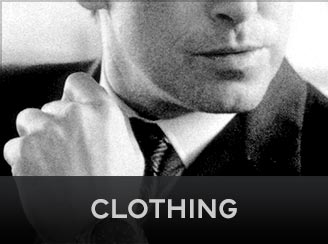
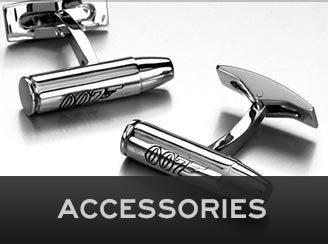



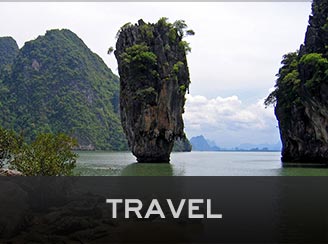


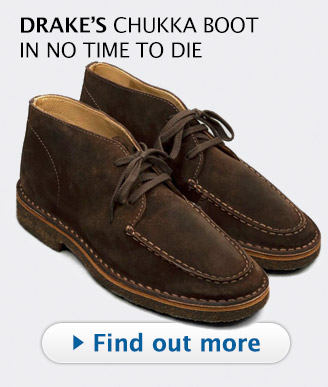









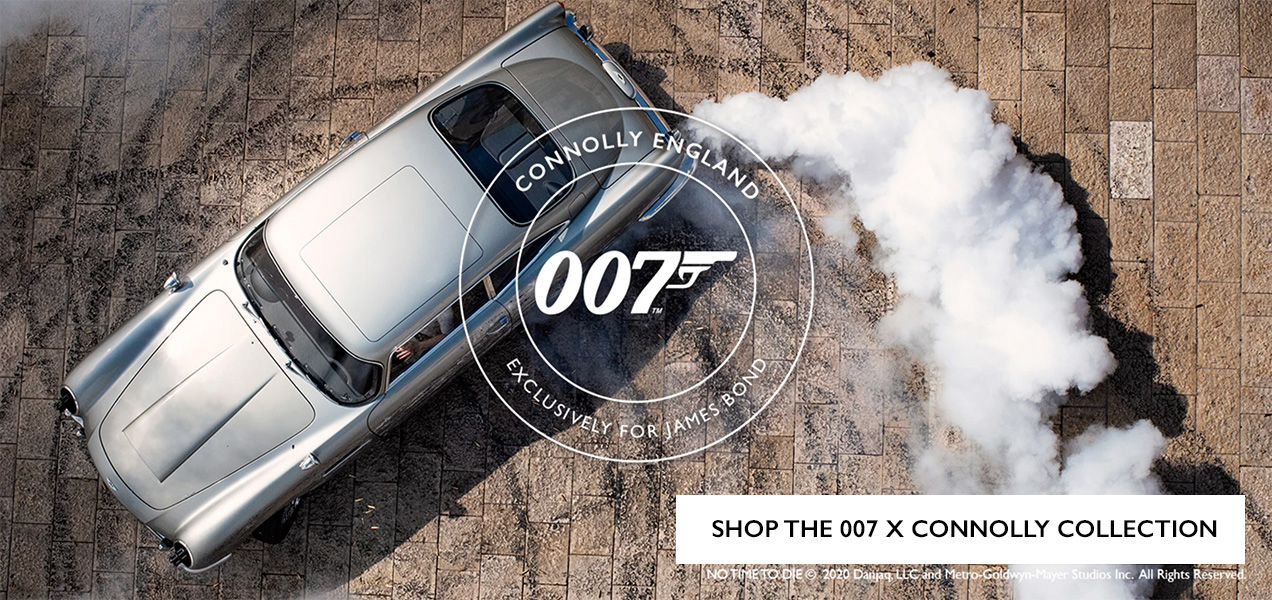


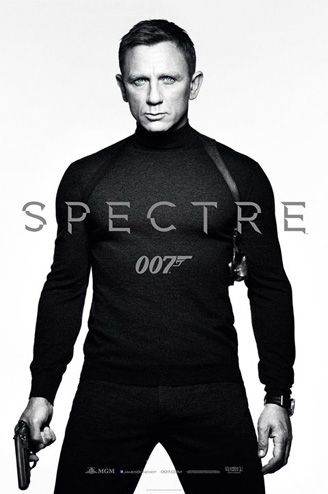


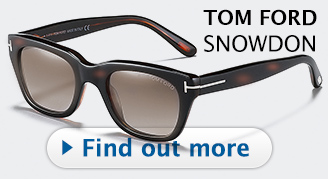
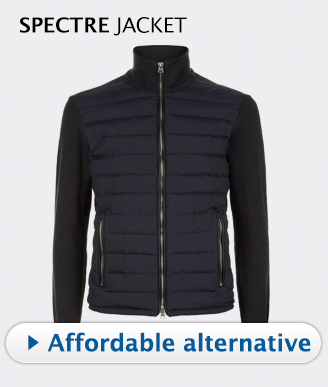


Comments
I loved this article... it was perfect to explain to my girlfriend why I love skiing so much... and she is going skiing for the first time this weekend! This will definitely get her up to speed fast. EXCELLENT... 5 Stars... ofcourse.. because its James Bond's Lifestyle we are talking about!!!
Add new comment